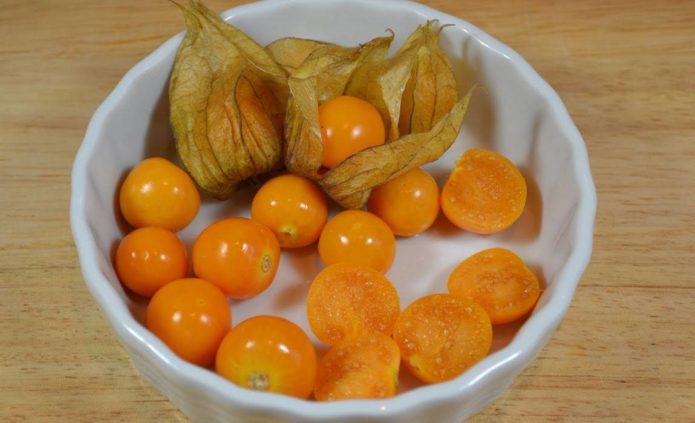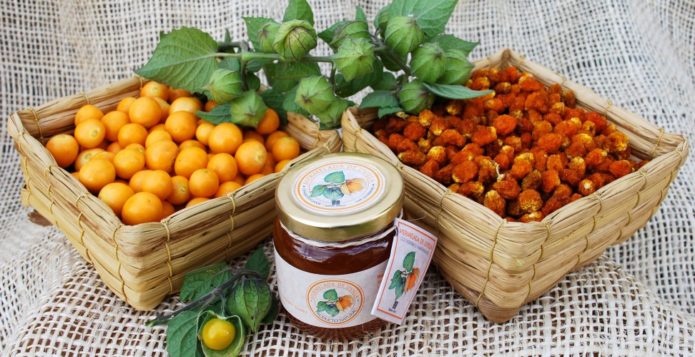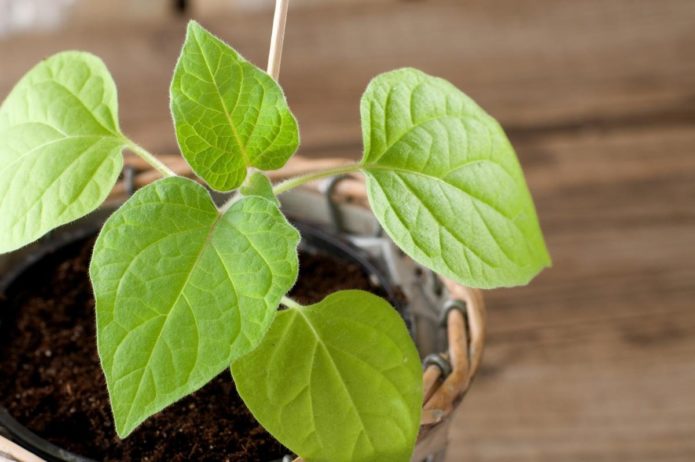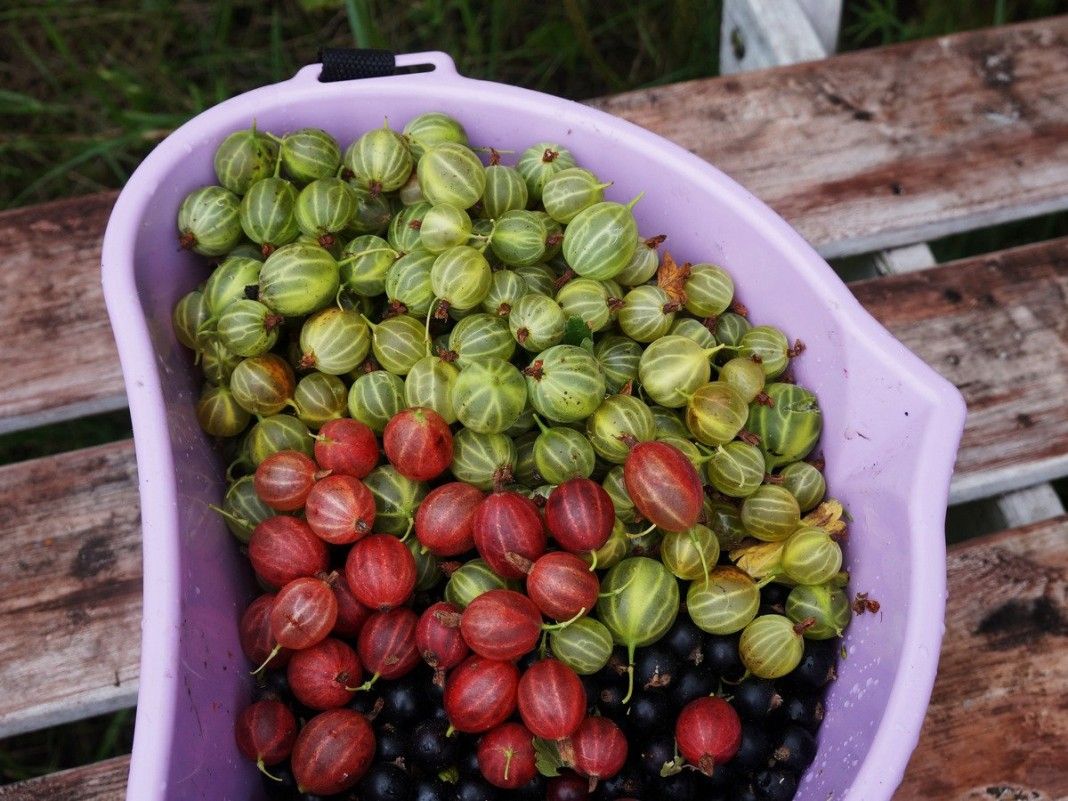Strawberry Physalis is an original and unpretentious berry plant, grown in an annual culture in a temperate climate. Physalis fruits can be eaten fresh or used for various homemade preparations.
Main features of strawberry physalis
Physalis is a herb from the Solanaceae family. A characteristic feature of all physalis is that their fruits are juicy, multi-seeded berries, enclosed in a kind of swollen cup, similar to a miniature Chinese lantern.
There are several types of physalis:
- decorative perennial,
- vegetable mexican,
- berry strawberry.
Strawberry Physalis gets its name from the pleasant sweet taste and peculiar aroma of its fruits. You can eat them fresh, make jam and compotes from them, cook candied fruits, make dried fruits like raisins. The fruits collected together with the cups can be stored in a regular household refrigerator for up to several weeks. Immediately before using the physalis berries, you must cleanse the flashlight covers.
Strawberry Physalis should be harvested fully ripe, its unripe berries can cause indigestion.
Strawberry physalis bushes grow up to 0.5-1 meters in height and branch abundantly. Leaves and stems are covered with velvety pubescence. Flowers and fruits form at the base of the leaves. The homeland of strawberry physalis is the tropics of Central and South America, where it can grow as a perennial plant. This physalis does not tolerate winter frosts, therefore, in our Russian conditions, it is grown only in an annual culture.
Rounded strawberry physalis berries grow no more than 10-15 grams in weight and up to 1-2 centimeters in diameter. In unripe fruits, the berries and calyx are green. When fully ripe, the berries themselves become amber-yellow, and their caps turn pale, dry out and often break right on the plants, despite the sufficient amount of free space between the berry and the inner walls of the flashlight. From germination to ripening of the first berries, 90–100 days pass.
Strawberry Physalis on video
Popular varieties of strawberry physalis
Strawberry Physalis is a relatively new and rare plant for Russian gardens, so it has few varieties. In the conditions of the middle lane, the variety Zolotaya rass of the VNIISSOK selection and the varieties Pineapple, Dessertny and Strawberry from the Classic series from the NK agricultural firm have proven themselves well.
Large-fruited (with berries weighing up to 50-80 grams) varieties of physalis with tempting confectionery names belong to another botanical species - Mexican physalis, which differs from strawberry by the absence of pubescence on the stems and leaves and a tighter adherence of the caps to the berries.
How to grow strawberry physalis
Strawberry physalis is a light-loving and heat-loving plant that does not withstand the slightest frost. In order for the berries to ripen in a short Central Russian summer, physalis must be grown through seedlings.
Seedling preparation
For seedlings, strawberry physalis is best sown in the second half of March.Any ready-made soil mixture designed for growing seedlings of solanaceous crops is suitable. Seeds are sown in pots with soil to a depth of 1 centimeter, placed on a warm and light windowsill and keep the soil constantly moderately moist. Seedlings appear about a week after sowing.
Transfer to the garden and further care of physalis
Physalis can be planted in open ground only after the end of spring frosts, without shelter it is not earlier than the beginning of June, and under the film it can be planted already at the end of May. It is necessary to plant on a well-lit garden bed with fertile soil, placing an earthen clod at the same depth as the seedlings grew in pots, and leaving at least 30 centimeters between the plants. Planted plants should be watered abundantly with water from a watering can.
Physalis should not be planted after potatoes or tomatoes, these crops may have common diseases, although physalis is considered more resistant to late blight - the most dangerous disease of nightshade crops.
Planting maintenance during the season consists of regular weeding and weekly watering in the absence of rain. On fertile soils, special feeding is not required; on the poor, you can feed it a couple of times a season with any complex fertilizer according to the instructions on the package.
Physalis does not require any pinching and shaping, but it is advisable to tie the spreading bushes to the stakes so that they do not lie on the ground.
Reviews
last season I had a gold placer from VNIISSOK (with disgusting seed germination). The fruits fit the description - small, not sticky, but they didn't like the taste. Maybe the place of this placer didn't fit (not very sunny), I don't know.
Fresh - not very good. Better to use in blanks (such as "porridge from an ax"). You can remove the top shell, rinse with warm water and dry in the sun. The result is a raisin substitute.
We kept the ripe physalis in boxes for about a month (if in the refrigerator, then longer). And the unripe is first ripened, like tomatoes, so it will lie down longer.
Growing strawberry physalis is easy even for novice gardeners. This unusual plant does not require complex maintenance and serves as an original decoration of the garden plot.





